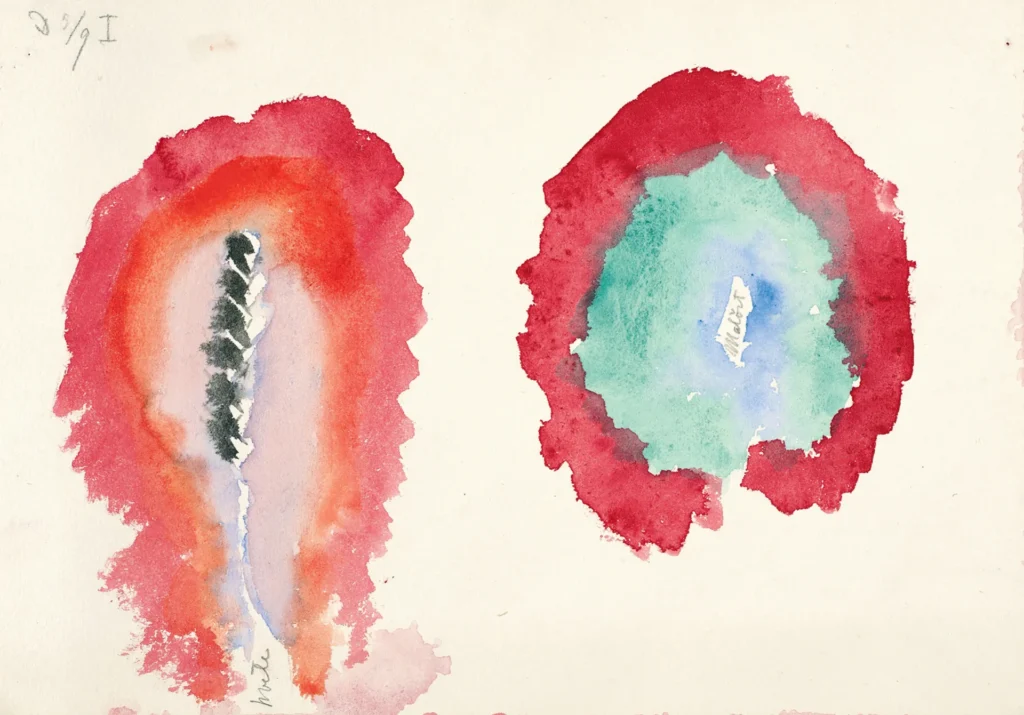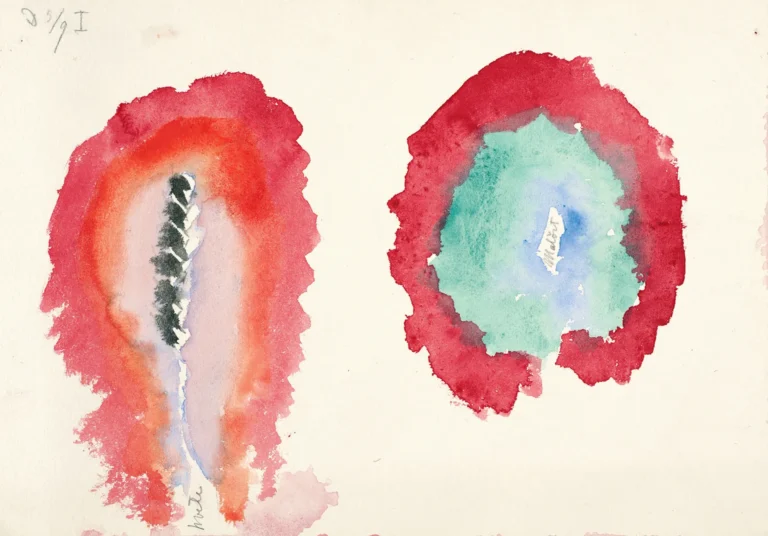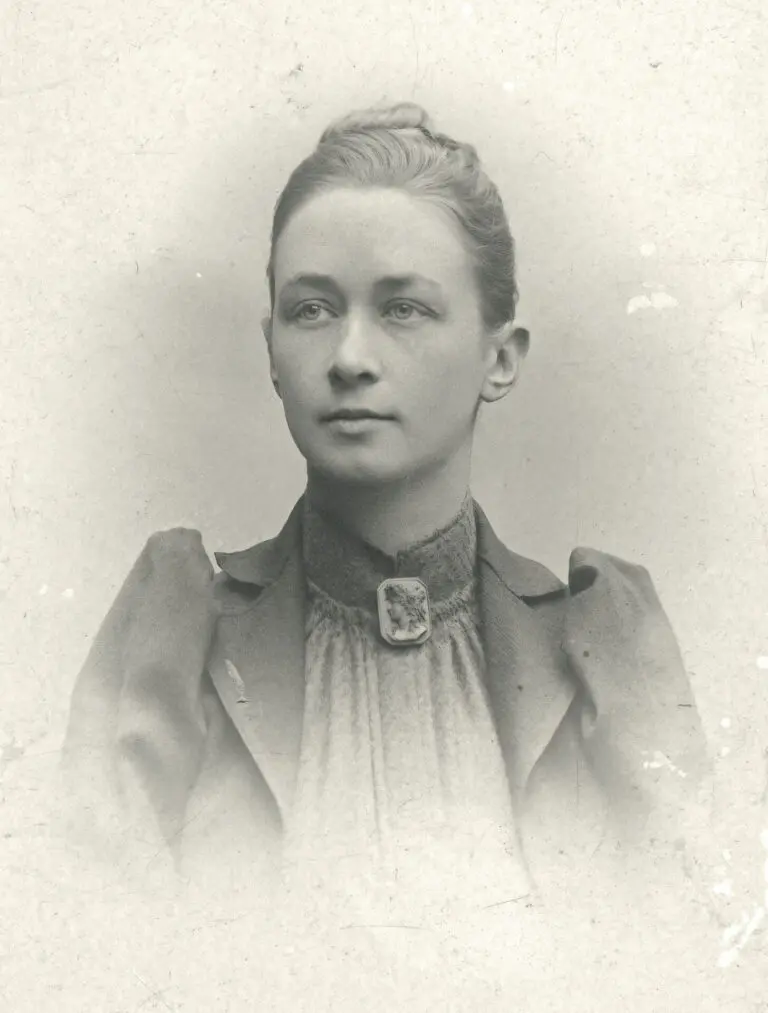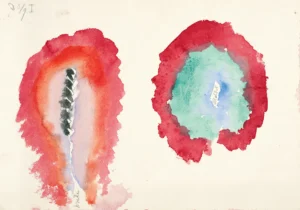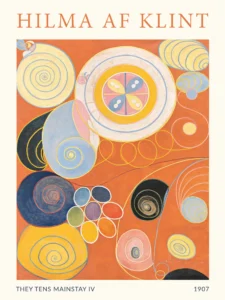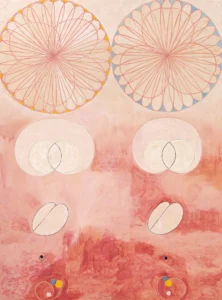Wheat and Wormwood (1922)
Hilma af Klint's Wheat and Wormwood, created in 1922, marks a pivotal shift in her artistic style towards fluid and expressive watercolors. This painting is emblematic of her exploration of spiritual themes infused with the mystical influences of Rosicrucianism and Theosophy. Utilizing a technique known as 'floating colors,' af Klint blended hues on wet surfaces to achieve a transcendent quality. Although her work was hidden from public view during her lifetime, Wheat and Wormwood stands as a testament to her prophetic vision and has garnered increasing acclaim in the modern art landscape.
Year 1922
About the Artwork
Wheat and Wormwood represents a transformative period in Hilma af Klint's career, where her mystical beliefs and innovative techniques converged. In 1922, she embraced a new style of watercolor painting that allowed her to explore more organic forms and emotive colors. This approach was informed by her studies in anthroposophy, a philosophy that deeply resonated with her spirituality. Despite being groundbreaking in its time, af Klint's work remained largely unrecognized until years after her passing, revealing her as a pioneer of abstract art. Her works were posthumously appreciated, showcasing themes of spirituality intended to bridge the human experience with divine messages.
Did You Know
Hilma af Klint believed that her artwork was too advanced for her contemporaries. She stipulated that her paintings should not be publicly exhibited until 20 years after her death, which was not until 1944.
Af Klint is often regarded as a pioneer of abstract art, predating famous abstract artists like Wassily Kandinsky. Her use of color and symbolism paved the way for future movements in modern art.
Wheat and Wormwood, like many of af Klint’s works, is rich in spiritual symbolism and reflects her interest in the metaphysical. The title itself alludes to biblical references, suggesting underlying themes of conflict between good and evil.




